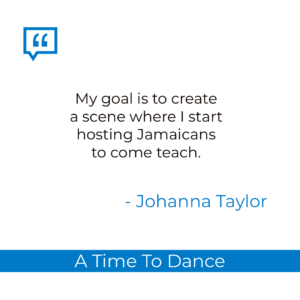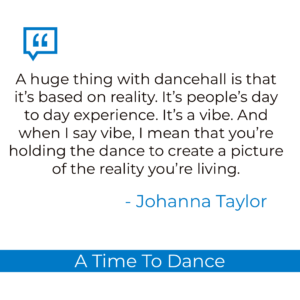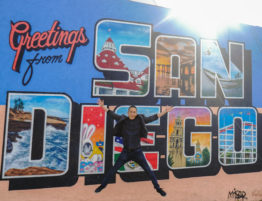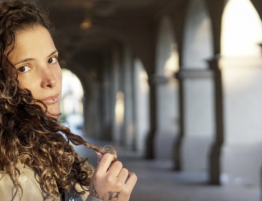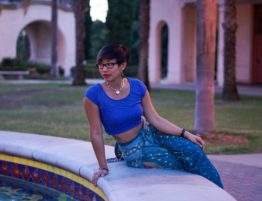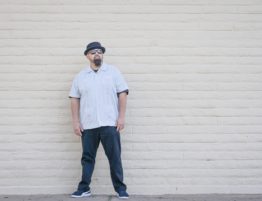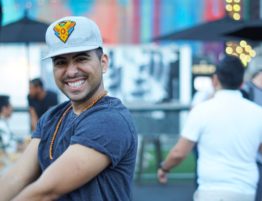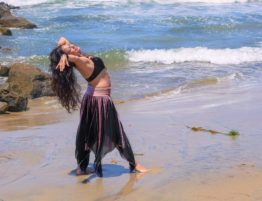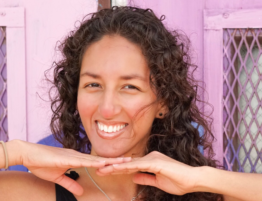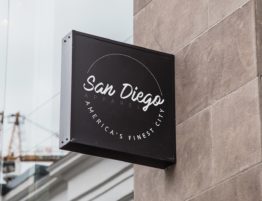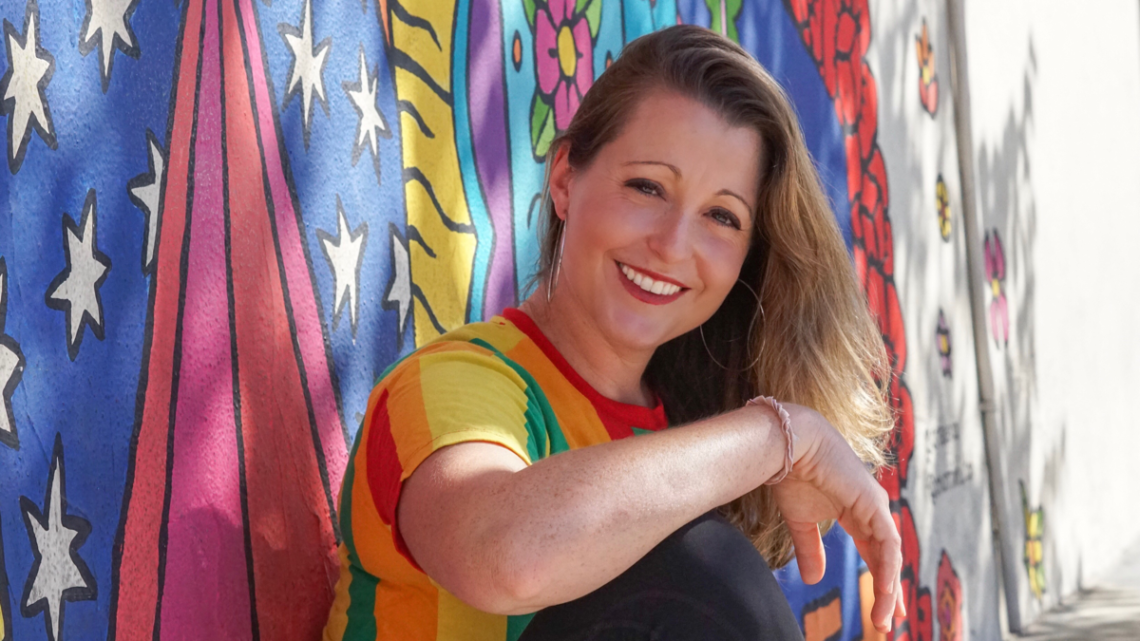
Meet Johanna Taylor, your local San Diego Jamaican dancehall ambassador.
When it comes to dancehall, Johanna is 100% in. But she’s not in it to make a name for herself or to get a bunch of followers. She’s in it because she 100% loves dancehall, plain and simple.
And the more you speak with her, the more apparent her love of dancehall becomes – she’s sought out all of the best Jamaican choreographers, traveled to Jamaica a number of times, and finally, started her teaching journey (reluctantly at first).
We sat down with Johanna to chat about how she got where she is today, learn more about the fascinating history of dancehall, and what its future looks like in San Diego!
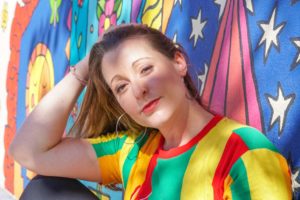
Q: How did you get into dancehall?
Johanna: I was living in the Bay Area and doing a lot of West African and Afro Caribbean dancing. As I explored the music, I got into reggae and from there I got into dancehall on Youtube.
And because I was so into the music, I started looking up dance videos and following certain choreographers. I found out about those choreographers coming to the Bay Area and was able to take their workshops.
I even commuted to LA to study it more. Then, I decided I needed to go to Jamaica.
My trip to Jamaica was when I really started dancing dancehall.
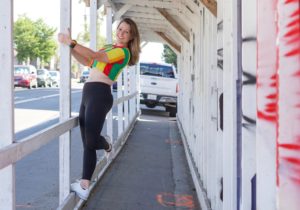
Q: How many times have you been to Jamaica?
Johanna: I have been there 4 times now. The third time that I went, I lived there for 3 ½ months.
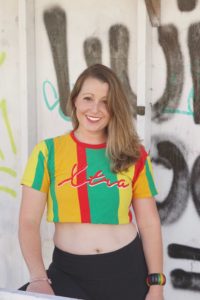
Q: What was that like?
Johanna: It was crazy! I was with my boyfriend at the time who was a dancer. I was dedicated to learning as much as I could during that amount of time and would train with him during the day.
He knew a lot of old school and mid school stuff, so we would do that. I would take classes and then just party at night. The parties are really where you get to see the culture and the scene come alive.
Q: What is old school and mid school?
Johanna: So dancehall started in the 80s. It wasn’t an actual dance form at that time – it was just a place where people would go in Jamaica to play music and dance.
The first actual dancer was Bogle. Bogle was part of one of the toughest gangs in Jamaica, and it’s because of him that it became okay for men to start dancing.
Before Bogle, everyone would get in in a circle (which, it’s still like that), but it was just the women who would get in the circle and do the twerking, whining, all that, and all the men would just kind of stand with their drinks on the outside and never dance.
Then Bogle came along. He introduced new movements and if anyone asked, “Hey why is this man, pussy, whatever, dancing?” then he had his whole gang to back him up. If you want to say something, you’ll die!
He started what we call old school movement.
There was skanking, which is old school old school, and then the second round of old school, which is Bogle movement. He has a bunch of different dance moves: Bogle, Sesame Street, World Dance etc.
Once he died, sadly from gang violence, he paved the way for other dancers to come up with mid school. This is when the first teams with men came out in Jamaica. Mid school movements were simpler to follow, something they came up with at the parties.
Dancehall started getting foreign attention at the end of the mid school movement, especially from Europe and Russia in particular. And there were a lot of Jamaicans in New York, so a lot of mid school movements were happening in New York. Foreigners were traveling to Jamaica and Jamaicans were going abroad.
New school started happening around 2010 when their movements started mixing with everything else: Latin movement, afrobeats, samba, hip hop, literally everything. That mixture is what we call new school and that is what we’re in right now.
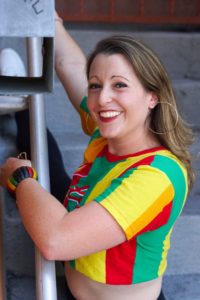
Q: Could you explain the scene a little bit?
Johanna: When I talk about the scene, it’s a party, but it’s not going to be indoor. It’s a parking lot or a shopping center or somewhere they close down at night. They close it off, they put up a bar, and the DJ is right in the center. All the dancers gather around in a circle with the teams in the middle, so like the inner edge. They will do their steps so everyone can see.
Everyone else – foreigners, other Jamaicans, are on the outside of the circle. Only the dancers are allowed on the inside. It’s very ritualistic. There’s a whole etiquette. Like with social dancing, you don’t just go out in the middle and start waving your body. You follow the steps at the party.
They’ll play occasional songs that are party grooves that everyone knows, like fling your shoulder…songs that are like the macarena here that everybody knows. The end is female dancing. The circle parts and all the women go to the middle and start twerking or daggering, like dry humping and climbing on telephone poles…and then the party is over!
Q: Oh wow. Does anything like that exist in San Diego?
Johanna: No. Not at all. So San Diego plays dancehall music, but no, it’s not like that.
New York is one of the only places in the US where they do that.
LA has one night a week where they can mimic it and San Francisco sort of, but not really. Europe and Russia you can find it. It’s huge there and they have their dancehall queen competitions. But here, no.
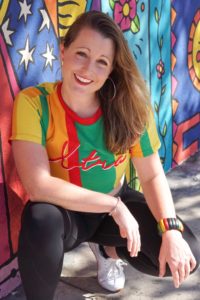
Q: So how did you get into teaching?
Johanna: Originally, I was never going to teach. I’m not Jamaican and I did not think it was appropriate. That was my philosophy for the longest time and I stuck with that.
But I got into teaching because when I was in Jamaica, I was working with Latonya Style, who is one of the OG dancehall dancers. She has her own program called Stylish Moves.
I did her program and afterwards she was like, “Ok, now you’re going to start teaching in California. This is a teacher training.”
So, ok, I have Latonya Styles’ blessing. If anyone says anything, well, Latonya Style made me!
And my boyfriend at the time said, “You should teach this. There’s nobody else doing it where you’re moving. Start small. You know what you’re doing. You can do it.”
So, basically, I got their blessing and started teaching so that I could keep the culture and my training alive. Then it became bringing it here.
And that’s my goal with teaching. It’s not centered around me. My goal is to create a scene where I start hosting Jamaicans to come teach. That’s what they do in Europe. Really, it’s important for Jamaicans to come anywhere where it is so that it can really, really be learned. My goal for next year is to start hosting teachers for workshops, but you have to build a community to do that.
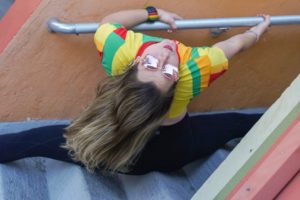
Q: And you’ve taken some of your students to Jamaica.
Johanna: Yes! I took one from San Diego and one from Santa Cruz. They definitely liked it. It’s a whole different ballgame learning from a Jamaican!
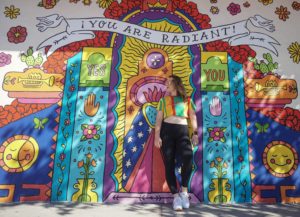
Q: When is you class and what can people expect from it?
Johanna: Thursdays at 6:30-7:30. They can expect to learn a foundation. I don’t focus on tricky choreography. I focus on the steps, is what I call it.
Occasionally I’ll put them in a choreography, but only when we’ve actually learned the dancehall steps, where they came from, who came up with them, what they’re called. And it’s open to everybody!
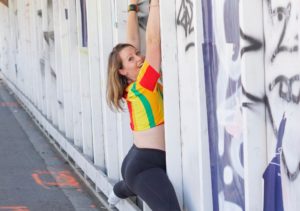
Q: So the future of dancehall in San Diego looks like you bringing Jamaica dancehall dancers here. That’s exciting! Is there anything you wish people would know about dancehall?
Johanna: A huge thing with dancehall is that it’s based on reality. It’s people’s day to day experience. It’s a vibe. And when I say vibe, I mean that you’re holding the dance to create a picture of the reality you’re living.
I want people to know that I am not part of this reality. I’m white. I’m American. I was born in California. I am not Jamaican. What I really want people to know is that I am acting as a messenger of the culture to kind of get people in so they can understand it and see for themselves.
Something else that I want to do, besides bringing Jamaicans here, is to do excursions and take people to Jamaica to take classes, kind of a bigger scale of what I did with my students. A cultural exchange.
Johanna Taylor is a dancehall instructor at A Time To Dance Studio in San Diego, California.
Follow her and A Time To Dance on social media for more dance videos, events, and content:
Instagram:
Facebook: A Time To Dance Studios
Heather Hallahan
Latest posts by Heather Hallahan (see all)
- Q&A with Kevin Qin: An Engineer’s Journey To Finding Purpose In Teaching Salsa - Thu, January 30, 2020
- Q&A With Ruana Vasquez: Valuing Women In Brazilian Zouk - Sat, December 14, 2019
- Q&A With Elizabeth Kilrain: Who Gets To Say What Blues Is? - Mon, November 25, 2019

